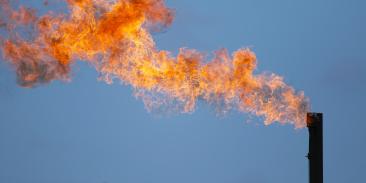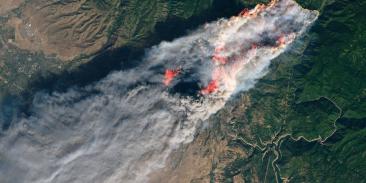Government Climate Change Study Highlights Impacts On US Agriculture
Environmental Defense scientists said today that an assessment by the US government on the potential national impacts of climate change paints a troubling picture for many in the US agricultural community. The assessment will be released Monday, June 12, for public comment. It examines possible effects on every region of the US and on sectors particularly affected by climate changes, including coastal areas and marine resources, forests, public health, water, and agriculture.
The report finds that warmer temperatures, increased precipitation, higher concentrations of atmospheric carbon dioxide (CO2), and appropriate farmer adaptations could result in higher crop yields for the US as a whole. Yet the report also notes that extreme events like heat waves, droughts and floods could dramatically undercut crop yields. These events, combined with increases in average temperature, could occur more often, last longer, and inflict greater damage on crops than today. The assessment also examines the impacts of increased pests, diseases and weeds under warmer conditions and higher CO2 concentrations.
“Because climate change can affect different regions in different ways, the geographical distribution of food production areas will likely change, potentially causing the disruption of rural communities. Northern areas, for example, could gain from a longer growing season, while southern areas might be at risk from higher temperatures and less rainfall,” said Dr. Janine Bloomfield, an Environmental Defense senior scientist.
“The climate is already changing,” said Dr. Michael Oppenheimer, Environmental Defense chief scientist. “Because greenhouse gases remain in the atmosphere for decades, our past emissions mean additional warming is inevitable. The time for reductions in emissions from farms, factories, power plants, and cars is now.”
Farmers can reduce greenhouse gas emissions by using farming practices that can benefit their farms and save money. Such practices include storing carbon in the soil through the use of cover crops, precision agriculture and conservation tillage, and using methane-recovery systems for liquid manure, such as digesters or covered lagoons, to reduce methane emissions.
With more than 3 million members, Environmental Defense Fund creates transformational solutions to the most serious environmental problems. To do so, EDF links science, economics, law, and innovative private-sector partnerships to turn solutions into action. edf.org
Latest press releases
-
Trump Administration’s New Tax Credit Guidance Is “Another Senseless Attack on Clean Energy”
August 15, 2025 -
More Dire Colorado River Reservoir Forecasts Reinforce Urgent Need for Action
August 15, 2025 -
EDF, UCS Ask Court to Enjoin Trump Administration’s Brazenly Unlawful Use of Corrupt “Science” Report
August 15, 2025 -
Independent Report Finds that the Trump Administration’s Orders to Keep Coal-fired Power Plants Running Could Cost Consumers between $3-6 Billion a Year
August 14, 2025 -
EDF Strongly Opposes Trump Administration Proposals to Eliminate Protections for Air Pollution from Power Plants
August 13, 2025 -
Some Truck Makers Challenge Vital Clean Truck Partnership with California
August 12, 2025










